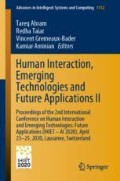Abstract
Kansei is a Japanese term referred to human feelings activated at emotional level, once in contact or relation with a particular object or context. The Kansei Engineering (KE) method developed by Mitsuo Nagamachi in the 1970s introduced the kansei approach into design community for the first time. In this regard, Kansei Design (KD) is a novel holistic approach to users’ perceptions at cognitive level which seems appropriate to applications in architectural design. Scope of this paper is to investigate about specific approaches and methodologies currently adopted in KE and KD, which are mainly focused on intrinsic characteristics of artefacts, and their possible extension to applications in the fields of Architecture and Built Environment in terms of emotional quality of forms and spaces.
Access this chapter
Tax calculation will be finalised at checkout
Purchases are for personal use only
References
Lokman, A.M.: Design & emotion: the kansei engineering methodology. Malays. J. Comput. 1(1), 1–12 (2011)
Lévy, P., Lee, S.H., Yamanaka, T.: On kansei and kansei design: a description of Japanese design approach. In: IASDR07 Conference Proceedings, Hong Kong Polytechnic University, Hong Kong (2007)
Scherer, K.R.: What are emotions? And how can they be measured? Soc. Sci. Inform. 44(4), 695–729 (2005)
Schütte, S.T.W.: Towards a common approach in kansei engineering. A proposed model. In: Proceedings of the Conference Interfejs użytkownika – Kansei w praktyce, Warsaw, Poland, pp. 8–17 (2007)
Harada, A.: Promotion of kansei science research. In: Proceedings of the 6th Asian Design Conference, pp. 49–51, University of Tsukuba Institute of Art and Design, Japan (2003)
Lévy, P.: Perception theories and kansei design. In: Proceedings of the International Conference on Kansei Engineering and Emotion Research KEER 2014, Linkӧping, Sweden, pp. 287–297 (2014)
Lévy, P.: Beyond kansei engineering: the emancipation of kansei design. Int. J. Design 7(2), 83–94 (2013)
Lévy, P., Yamanaka, T., Tomico, O.: Methods and means for kansei design. In: Proceedings of ErgoDesign Forum, Lyon, France (2009)
Lévy, P., Yamanaka, T., Ono, K., Watanabe, M.: Prospective psychophysiological approach for kansei design: knowledge sharing between psychophysiology and design. In: Proceedings of the International Association of Societies of Design Research Conference, IASDR 2009, Seoul, South Korea (2009)
Sendai, S.: Architectural kansei of ‘wall’ in the Façade design by Le Corbusier. Kansei Eng. Int. J. 10(1), 29–36 (2010)
Schütte, S.T.W., Eklund, J., Axelsson, J.R.C., Nagamachi, M.: Concepts, methods and tools in kansei engineering. Theor. Issues Ergon. Sci. 5(3), 214–231 (2004)
Nagamachi, M.: Kansei engineering: a new ergonomic consumer oriented technology for product development. Int. J. Ind. Ergon. 15(1), 3–11 (1995)
Nagamachi, M.: Kansei engineering and rough sets model. In: Greco, S., et al. (eds.) Rough Sets and Current Trends in Computing. RSCTC 2006. LNCS, vol. 4259. Springer, Berlin (2006)
Nagamachi, M.: Perspectives and the new trend of kansei/affective engineering. TQM J. 20(4), 290–298 (2008)
Nagamachi, M.: Kansei engineering in consumer product design. Ergon. Design Mag. Hum. Factors Appl. 10(2), 5–9 (2002)
Nagamachi, M.: Kansei engineering: the implication and applications to product development. In: Proceedings of the IEEE International Conference on Systems Man and Cybernetics, SMC 2099, pp. 273–278. IEEE, USA (1999)
Bongard-Blanchy, K., Bouchard, C., Aoussat, A.: Limits of kansei – kansei unlimited. Int. J. Affect. Eng. 12(2), 145–153 (2013)
Author information
Authors and Affiliations
Corresponding author
Editor information
Editors and Affiliations
Rights and permissions
Copyright information
© 2020 The Editor(s) (if applicable) and The Author(s), under exclusive license to Springer Nature Switzerland AG
About this paper
Cite this paper
Caratelli, P., Misuri, M.A. (2020). Kansei Design and Its Applications in Architecture and the Built Environment. In: Ahram, T., Taiar, R., Gremeaux-Bader, V., Aminian, K. (eds) Human Interaction, Emerging Technologies and Future Applications II. IHIET 2020. Advances in Intelligent Systems and Computing, vol 1152. Springer, Cham. https://doi.org/10.1007/978-3-030-44267-5_7
Download citation
DOI: https://doi.org/10.1007/978-3-030-44267-5_7
Published:
Publisher Name: Springer, Cham
Print ISBN: 978-3-030-44266-8
Online ISBN: 978-3-030-44267-5
eBook Packages: EngineeringEngineering (R0)

